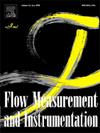研制用于空气-水流动实验的新一代双尖端相位检测探头
IF 2.7
3区 工程技术
Q2 ENGINEERING, MECHANICAL
引用次数: 0
摘要
自曝气是一种令人着迷的现象,通常发生在自然或人为环境中的高弗劳德数流中。表征这种流动的最常见的空气水流测量仪器是侵入式双尖端相位检测针探头,它可以识别针尖周围由于电阻率(相位检测电导率探头)或光折射(相位检测光纤探头)的变化而产生的相位变化。相位检测电导率探头通常是为研究目的定制的,目前的设计可以追溯到20世纪80年代。在目前的研究中,下一代双尖端电导率探头被开发和验证针对最先进的系统。该新型探头设计包括两个主要特征,包括(1)传感器电极的印刷电路板和(2)可拆卸的传感器头。这些特点比传统的针型设计提供了许多优点。例如,电路板可以高精度制造,传感器头在损坏或变质的情况下可以很容易地更换。因此,预计这种相对便宜且坚固的设计将使空气-水流动实验具有更好的可重复性,并为空气-水流动研究社区提供了更大的可及性。本文章由计算机程序翻译,如有差异,请以英文原文为准。
Developing the next generation of dual-tip phase-detection probes for air–water flow experiments
Self-aeration is a fascinating phenomenon that commonly occurs in high Froude-number flows in natural or human made environments. The most common air–water flow measurement instrument to characterise such flows is the intrusive dual-tip phase-detection needle probe, which identifies phase changes around the needle tips due to a change of resistivity (phase-detection conductivity probe) or light refraction (phase-detection fibre optical probe). Phase-detection conductivity probes are typically custom made for research purposes, with current design dating back to the 1980ies. In the present study, the next generation of dual-tip conductivity probes is developed and validated against a state-of-the-art system. The novel probe design comprises two main features, including (1) a printed circuit board of the sensor’s electrodes and (2) a detachable sensor head. These features offer many advantages over the classical needle-type design. For example, the circuit boards can be manufactured with high precision and the sensor head can be easily replaced in case of damage or deterioration. As such, it is anticipated that this relatively cheap and robust design will enable a better repeatability of air–water flow experiments, combined with an enhanced accessibility for the air–water flow research community.
求助全文
通过发布文献求助,成功后即可免费获取论文全文。
去求助
来源期刊

Flow Measurement and Instrumentation
工程技术-工程:机械
CiteScore
4.30
自引率
13.60%
发文量
123
审稿时长
6 months
期刊介绍:
Flow Measurement and Instrumentation is dedicated to disseminating the latest research results on all aspects of flow measurement, in both closed conduits and open channels. The design of flow measurement systems involves a wide variety of multidisciplinary activities including modelling the flow sensor, the fluid flow and the sensor/fluid interactions through the use of computation techniques; the development of advanced transducer systems and their associated signal processing and the laboratory and field assessment of the overall system under ideal and disturbed conditions.
FMI is the essential forum for critical information exchange, and contributions are particularly encouraged in the following areas of interest:
Modelling: the application of mathematical and computational modelling to the interaction of fluid dynamics with flowmeters, including flowmeter behaviour, improved flowmeter design and installation problems. Application of CAD/CAE techniques to flowmeter modelling are eligible.
Design and development: the detailed design of the flowmeter head and/or signal processing aspects of novel flowmeters. Emphasis is given to papers identifying new sensor configurations, multisensor flow measurement systems, non-intrusive flow metering techniques and the application of microelectronic techniques in smart or intelligent systems.
Calibration techniques: including descriptions of new or existing calibration facilities and techniques, calibration data from different flowmeter types, and calibration intercomparison data from different laboratories.
Installation effect data: dealing with the effects of non-ideal flow conditions on flowmeters. Papers combining a theoretical understanding of flowmeter behaviour with experimental work are particularly welcome.
 求助内容:
求助内容: 应助结果提醒方式:
应助结果提醒方式:


